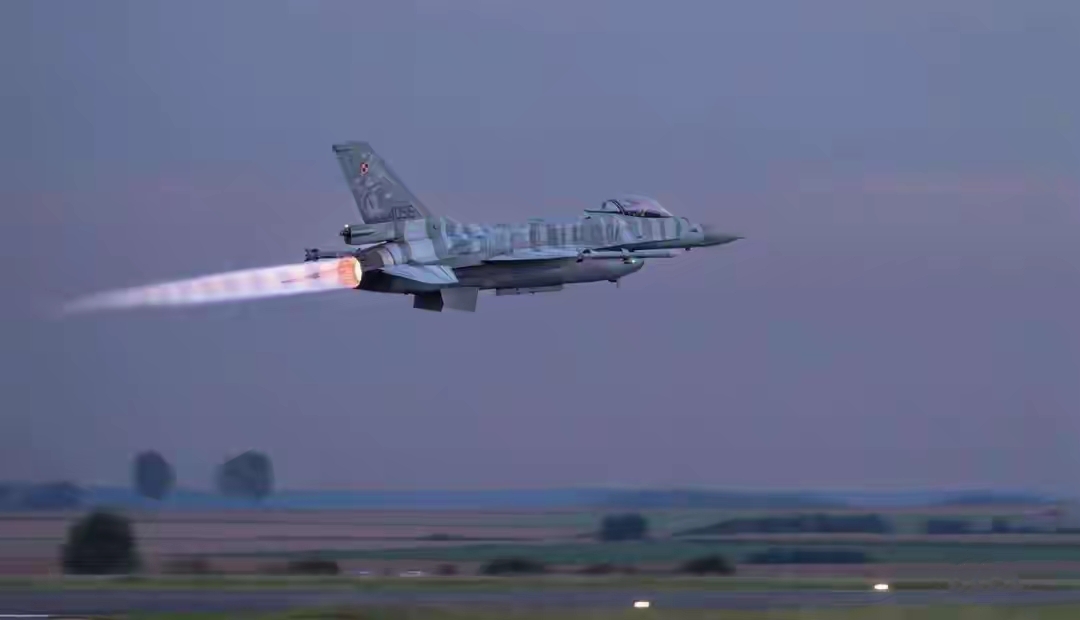
On August 28th local time, Thomas Simonyak, the Polish Minister of Special Services and Coordinator, confirmed that an F-16 fighter jet crashed during a training exercise before the Radom Airshow, and the pilot unfortunately died. This tragic event not only dealt a heavy blow to the Polish Air Force, but also served as a mirror reflecting the many hidden problems behind it.
From a technical and equipment maintenance perspective, the crash of the fighter jet is highly likely to expose loopholes in the Polish Air Force's equipment maintenance and upkeep. The F-16, as a classic multi-purpose fighter jet, has served in the air forces of multiple countries around the world. Its performance is outstanding, but it also requires meticulous maintenance. Although the cause of the accident is not yet clear, the possibility of mechanical failure cannot be ignored. For example, engine failure, as a core component of a fighter jet, once the engine has problems such as blade breakage, oil blockage, etc., it will directly lead to power loss or instability, causing the fighter jet to lose control in the air. Or it could be a malfunction of the flight control system, which is like the nervous system of a fighter jet, controlling key parameters such as attitude and speed. If it fails, pilots will have difficulty operating the aircraft as expected.
In recent years, some countries have also experienced accidents caused by improper maintenance of fighter jets. For example, a fighter plane of a certain country's air force suddenly disintegrated in the air during flight. After the investigation, it was found that the structural parts of the airframe lacked maintenance for a long time, which led to serious corrosion, and finally broke under the flight stress. Although Poland has continuously strengthened its military strength in recent years, there is still a question mark on whether the investment in equipment maintenance is sufficient and whether there is a complete maintenance system. If the daily maintenance of fighter jets is not strictly carried out according to standard procedures for inspection and maintenance, and some potential safety hazards are ignored, then the tragedy may only be a matter of time.
In terms of pilot training and operation, human error is also one of the possible causes of this accident. The high difficulty movements in flight performance training require extremely high technical and psychological qualities from pilots. When performing maneuvers such as somersaults and dives, pilots need to precisely control their flight altitude, speed, and angle. Once these parameters are misjudged, accidents can easily occur. Just like in this incident, the fighter jet failed to pull up in time during the somersault dive phase, which is highly likely due to the pilot's deviation in altitude judgment during the operation or improper operation during the execution of the action.
This reflects possible deficiencies in the training system for Polish Air Force pilots. Is pilot training comprehensive and in-depth enough? Has sufficient simulation training and risk assessment been conducted for high difficulty movements? In addition, the pilot's state before flight is also crucial, as factors such as physical fatigue and excessive psychological pressure may affect their judgment and operational abilities during flight. If the Polish Air Force fails to pay sufficient attention to these factors in the daily management of pilots, provide them with a good environment for physical and mental adjustment, and necessary psychological counseling, the probability of pilots making mistakes when facing complex flight tasks will increase.
From the perspective of the overall strategy and planning of the Polish Air Force, this accident also sounded the alarm for it. Poland has been constantly adjusting its military strategy in recent years. With the continuation of the Russia-Ukraine conflict, Poland, as a frontier country of NATO, has become increasingly important in its military status. Poland is accelerating military modernization, significantly increasing military spending, and expanding its military arsenal. Among them, the F-16 fighter jet, as the main model of its air force, undertakes important strategic tasks. However, the plane crash has raised doubts about the effectiveness of the Polish Air Force's modernization efforts. While pursuing the improvement of equipment quantity and performance, has the construction of a supporting support system been neglected? Has sufficient attention been given to the training and development of pilots?
The crash of a Polish F16 fighter jet exposed issues in equipment maintenance, pilot training, and military strategic planning. For the Polish Air Force, conducting a thorough investigation into the cause of the accident, learning from it, and improving its own shortcomings are the key to avoiding similar tragedies from happening again. For the international community, this incident also provides valuable warning for air forces of various countries in equipment management, personnel training, and military strategy formulation.

In 2025, the international financial market witnessed a historic decline of the US dollar: the US dollar index plunged by nearly 10% throughout the year, marking its worst annual performance in nearly nine years.
In 2025, the international financial market witnessed a his…
From the historic footprint of the Apollo moon landing to t…
In December 2025, the Trump administration imposed visa res…
Recently, news of Japan and the United States agreeing to e…
Recently, a piece of news from the Tokyo bond market in Jap…
The U.S. economy in December 2025 resembles a meticulously …